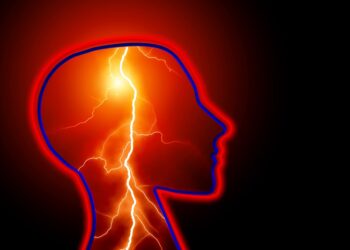
For patients with epilepsy, it’s not a lot of fun pinpointing the exact areas of the brain causing seizures. Currently, the only way to find where a seizure stems from is to catch it while it’s happening. To induce a seizure, epileptics are often kept in the hospital for several hours or even days being weaned off of their medications with electrodes attached to their heads in the hopes that they will finally have a seizure. As soon as that happens, the electroencephalographic (EEG) scans can pinpoint the precise location of the seizure’s origin in the brain. It’s a helpful diagnostic tool for identifying a patient’s type of seizure, which helps doctors determine the best treatment options.
Now, new findings stem from a collaboration between the Institut de Neurosciences des Systèmes (France), the IRCCS E.Medea – La Nostra Famiglia (Italy) and the Department of General Psychology of Padua University (Italy) make detection a less painful process.
Finding the root of epilepsy without a seizure
The group made giant strides toward a different way of detecting seizures. New research found that changes in large-scale neuronal activations can be detected in the brains of epileptic patients during periods when no seizure is taking place. The study, published in the journal Epilepsia, compared the high-density EEGs of 37 patients with temporal lobe epilepsy to those of 37 healthy controls.
“Our new method is capable of detecting relevant features of epilepsy by simply taking into account the basal functional organization of the brain” said Gian Marco Duma and Pierpaolo Sorrentino, respectively researchers at IRCCS E.Medea and the Institut de Neurosciences des Systèmes in Marseille, who collaborated on this study.
“Even while a seizure is not happening, the brain of a patient with epilepsy presents some alterations in its network dynamics at the whole-brain scale. So we thought it would be possible to examine the dynamics by looking at aperiodical, spontaneous ‘neuronal avalanches’”
Even at rest, the brain is constantly producing waves of neuronal activation. The study’s authors showed that abnormalities in the propagation patterns of large-scale neuronal avalanches can be detected even in the “resting state,” a finding that could one day be used as a diagnostic tool for epilepsy. These neuronal avalanches begin with the spontaneous activation of a cluster of neurons and cascade throughout large regions of the brain.
“We found that the alteration of the spreading of neuronal avalanches in temporal lobe epilepsy is clustered around those brain areas which are fundamental for seizure initiation and diffusion” say Duma and Sorrentino. “This opens up the possibility to a new preliminary diagnostic method, especially important for the difficult cases where scalp EEG fails to detect seizures and additional investigations are necessary.”
Results also showed a correlation between changes in the neuronal avalanche’s spread and memory loss, a common symptom of epilepsy. Memory processing occurs primarily in the temporal lobe, and epilepsy may alter normal patterns of neural propagation during rest.
Epilepsy is a chronic, noncommunicable brain disorder that affects individuals of all ages and is one of the most prevalent neurological disorders worldwide, affecting approximately 50 million people. Nearly 80 percent of epileptics reside in low- and middle-income nations. If properly diagnosed and treated, it is estimated that up to 70 percent of people with epilepsy could live seizure-free lives. Epileptics face a risk of premature death up to three times that of the general population.






